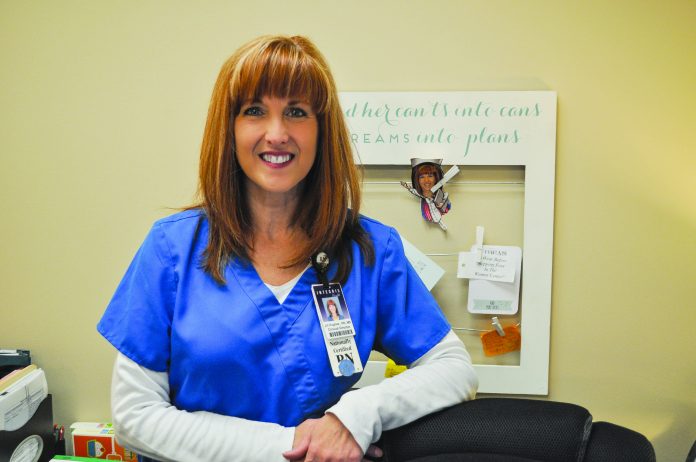
by Bobby Anderson,
Staff Writer
When it comes to the issue of sepsis, OB patients are at a unique risk.
According to the Centers for Disease Control, sepsis for OB patients is the No. 4 cause of maternal death in the U.S.
Infection and sepsis are also the direct cause for an increase in maternal deaths over the last 10 years.
That’s why nursing leaders in the Integris system have come together to create a unique assessment tool that is changing how nurses look at the possible diagnosis of sepsis.
It’s gone so well that Integris Canadian Valley Hospital Clinical Director Jill Hughes, MS, RNC-OB was asked to present to other leaders in the field at the recent Perinatal Leadership Forum in Dallas.
The national leadership forum welcomed 160 perinatal leaders from labor and delivery, postpartum, newborns and NICUs gathered to share information and best practices.
Every size hospital was represented with Integris sending five of its own from different facilities.
Prior to the conference a request was made from the audience if anyone had anything regarding core measures they could share.
The Integris project was a natural, Hughes said.
“In Integris one of the things we’re focusing on across Integris is sepsis identification,” Hughes said. “What we’ve realized is the OB patient is very different than the general population in how they present with sepsis.”
To tackle this problem, OB leaders within Integris got together and formed a Lean Team – a small, agile group focused solely on the problem.
“We are reviewing how nursing identifies early that this could be a sepsis patient and then communicates that to the physician so they can get ahead of it,” Hughes said.
Through the Lean meetings, an existing identification tool was identified and tweaked to fit the OB patient.
“What we’re doing is trying to create a tool that can be used for any OB patient anywhere to help us know the differences and if our patient fits in that criteria,” Hughes said. “I call it the journey because we’re still working on it.”
The tool was rolled out to staff for feedback.
“Our physicians asked to add one or two things and said if you’re going to draw these labs then we want you to start an IV, too,” Hughes said. “We’ll tweak it and try it again.”
The tool provides a checklist for patients and their symptoms. If two characteristics are met in the first category such as fever and elevated heart rate they are noted with the time.
“The Core Measure CMS has created is very time sensitive,” Hughes said. “Within three hours of someone being diagnosed with severe sepsis or septic shock the doctors have a set of criteria they have to meet. That’s why nursing helping with the early identification is so critical to meeting those deadlines.”
And at the forefront are nurses.
“This a nursing tool so this has nothing to do with treatment,” Hughes said, noting feedback from nurses involved has been positive. “This only has to do with identification.”
“What we tell our nurses is we would rather them use it on everybody than not use it enough because it’s not going to hurt anything,” Hughes said. “Anytime during their stay, if you see a change, pull this out as part of your assessment and see if they fit in your criteria.”
Hughes said the problem with OB patients is that they are often so healthy and maintain so long by the time you realize sepsis could be a factor they are really sick and go downhill quickly.
Hughes has taken the tool to the maternal child health physician health group.
“For us they approved this to be automatic,” Hughes said. “If they meet this criteria and they have some type of suspected infection we can automatically put in an order set that allows us to draw these labs without having to go to each physician individually.
“Every hospital has taken it to their physician group asking for this to be an automatic order set. It’s really great because that timeliness is so huge.”
And time is a factor.
CMS opens a three-hour window for all criteria to be completed for treatment. There’s also a six-hour cutoff for ancillary treatment.
“The issue is if you come back later and realize two-and-half hours ago she actually met criteria you have 30 minutes to get everything done and that’s why it’s so critical,” Hughes said.
It’s the same timeline for every population but one that can be particularly problematic with OB populations.
Moms after C-sections can already have elevated white counts, another marker for sepsis.
“So far my feedback has been good,” Hughes said. “They feel like it’s something that makes them think very succinctly. So far, our one patient who was positive it worked so perfectly.”











